What’s special about Windermere Bay?
Long before we were here, this special place was cared for by the Muwinina people, whose families enjoyed living here for thousands of generations. The shape of the bay and the resources it provides made it a natural gathering place where families ate together and shared stories and ceremony.
Like much of the timtumili minanya / Derwent Estuary, these cultural landscapes are still recognised and honoured by the Palawa Community today for their cultural and natural values.
Located within Windermere Bay is an estuarine saltmarsh. These are extremely important ecosystems, supporting various plants, birds, insects and animals.
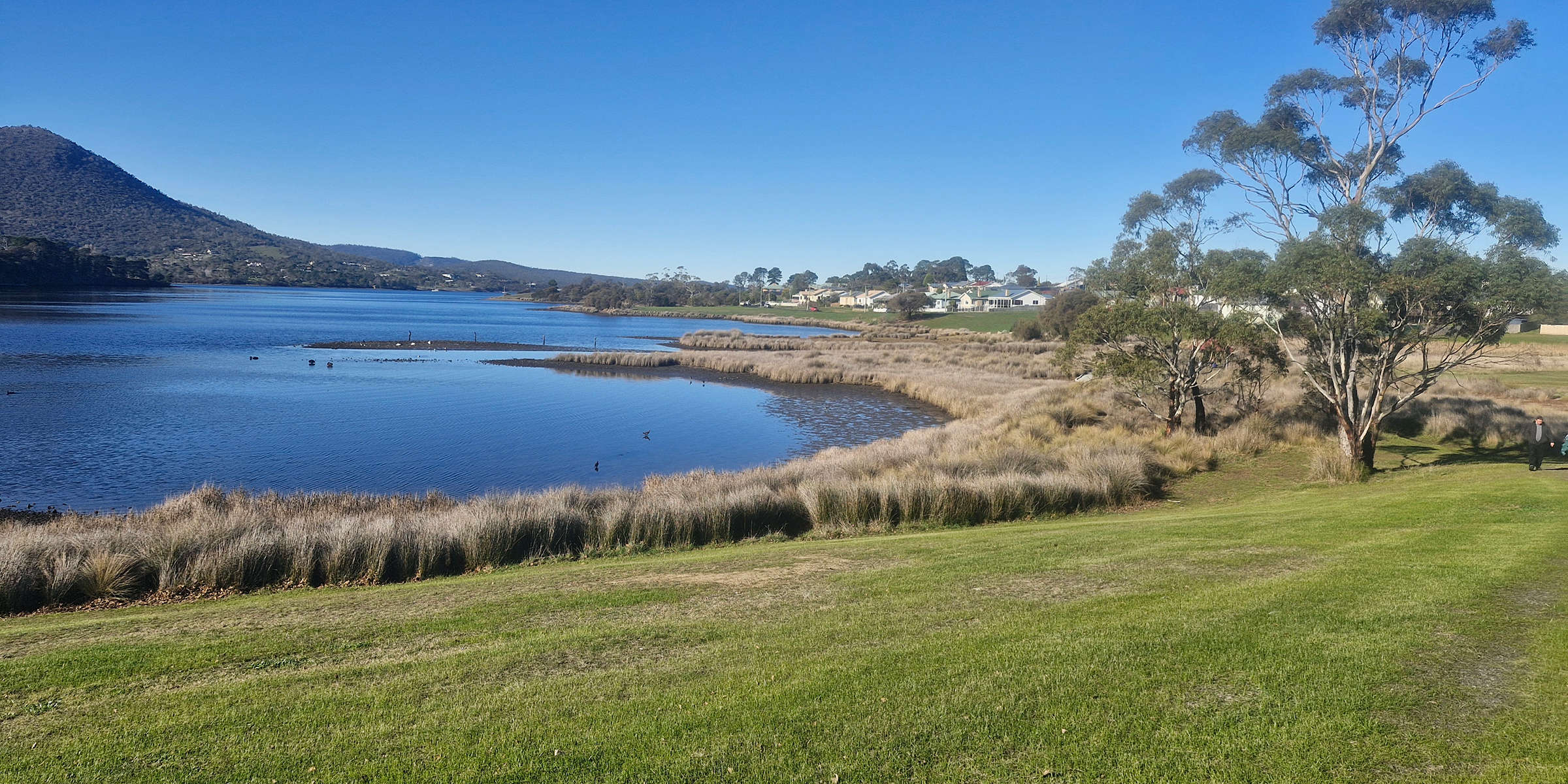
Windermere Bay on a sunny day
Image: Derwent Estuary Program
What is a saltmarsh?
A saltmarsh is an estuarine or coastal marsh, located in the intertidal zone, where saltwater meets the land between high and low tides. Freshwater also flows through these areas from rainfall, groundwater and creeks.
This inundation of water is essential for the ecosystem to operate and benefits wildlife, fish and people. Managing these areas is necessary to keep our waterways healthy, communities safe, and places for us all to enjoy.
The saltmarsh in Windermere Bay contains many unique saltmarsh plants, which are specifically adapted to the unique conditions and need regular water inundation to nurture them. This provides essential habitats, protection and food for many animals, including fish, birds, worms, snails, crabs, mammals, and insects.
These environments also provide incredibly important ecosystem services, including storing carbon from the atmosphere, improving water quality, protecting the coastal area and reducing flood risk. Healthy saltmarshes are nature’s water filters in coastal environments.
Many of these systems exist throughout the Derwent Estuary, including several in Old Beach, Ralphs Bay and Piyura Kitina (Risdon Cove).
Saltmarsh restoration
It’s important to protect and preserve the Windermere Bay saltmarsh so we can all share and respect its cultural and natural values.
The Derwent Estuary Program, in collaboration with the Glenorchy City Council has undertaken a saltmarsh restoration project in Windermere Bay.
We have now excavated approximately 0.3 ha within the bay, to allow for saltmarsh restoration.
The council has replaced and extended the boardwalk over the saltmarsh restoration area and Faulkners Rivulet to provide a great connection between both sides of the foreshore track in the bay.
Why are we restoring the saltmarsh?
You might think that the saltmarsh here looks healthy, and it is!
However, the total area of saltmarsh in the bay was much larger than it currently is. In the early 1970s, infill was placed on some areas of the saltmarsh, reducing the total area of saltmarsh within the bay by over 50% (total area of approximately 1 ha). Over the last 12-months the Derwent Estuary Program have restored a large area of infilled saltmarsh at Windermere Bay. See below aerial imagery of the historic extent of the saltmarsh pre- and post-infilling.
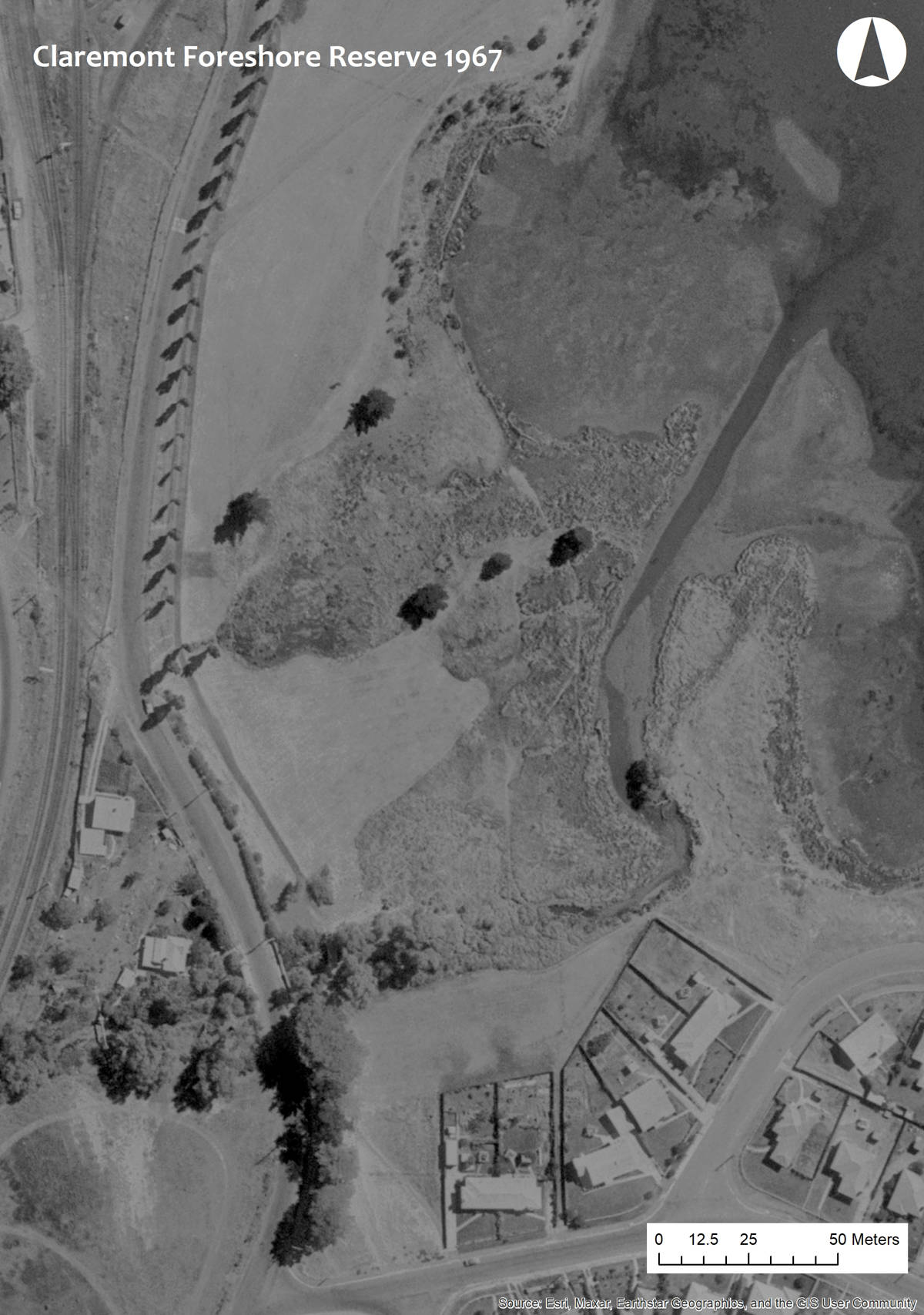
Windermere Bay saltmarsh aerial view, pre-infilling (1967)
Image: TheList; Esri, Maxar, Earthstr Geographics, and the GIS User Community
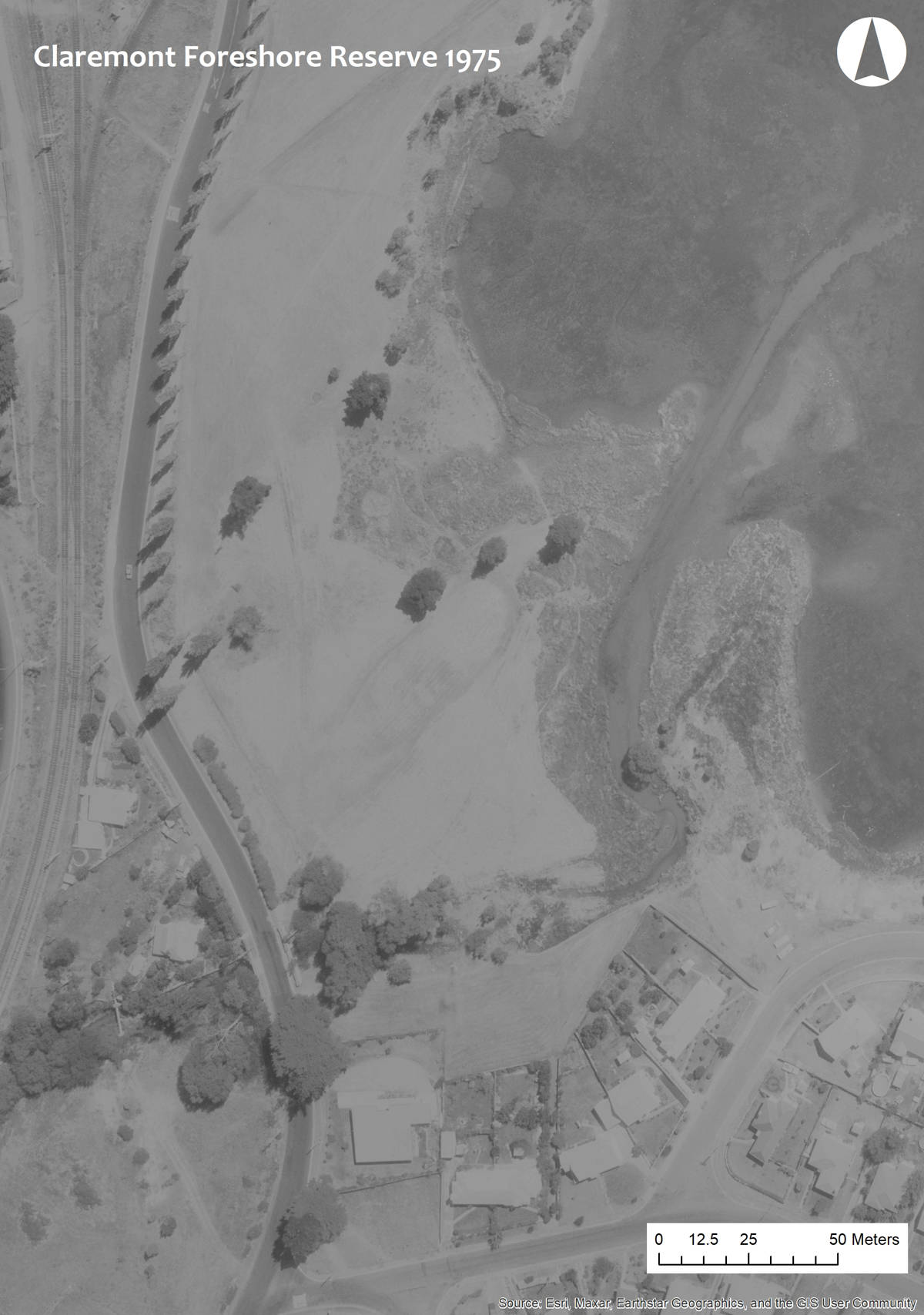
Windermere Bay saltmarsh aerial view, post-infilling (1975)
Image: TheList; Esri, Maxar, Earthstr Geographics, and the GIS User Community
What were the restoration steps?
To remove the relatively large volume of soil from the historic marsh area, we needed the help of large excavation machinery. The ground level was reduced to its natural elevation so that tidal flows from the estuary and flooding from Faulkners Rivulet can easily pass over the soil.
On ground excavation works were complete in June 2025, and with the council’s new boardwalk over the area complete the restoration can be viewed up close and personal.
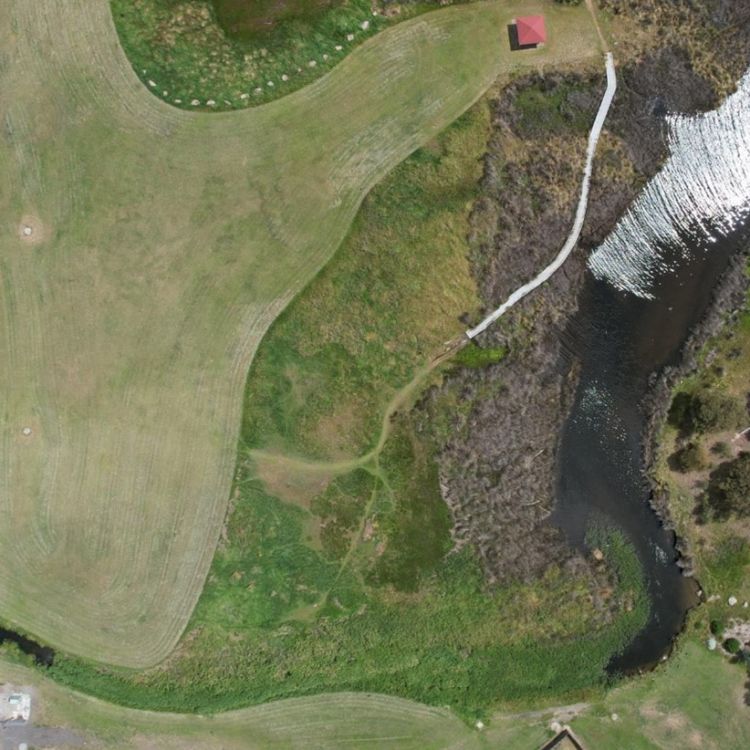
Aerial drone imagery before excavation works at Windermere Bay
Image: Mark Bachmann, Nature Glenelg Trust
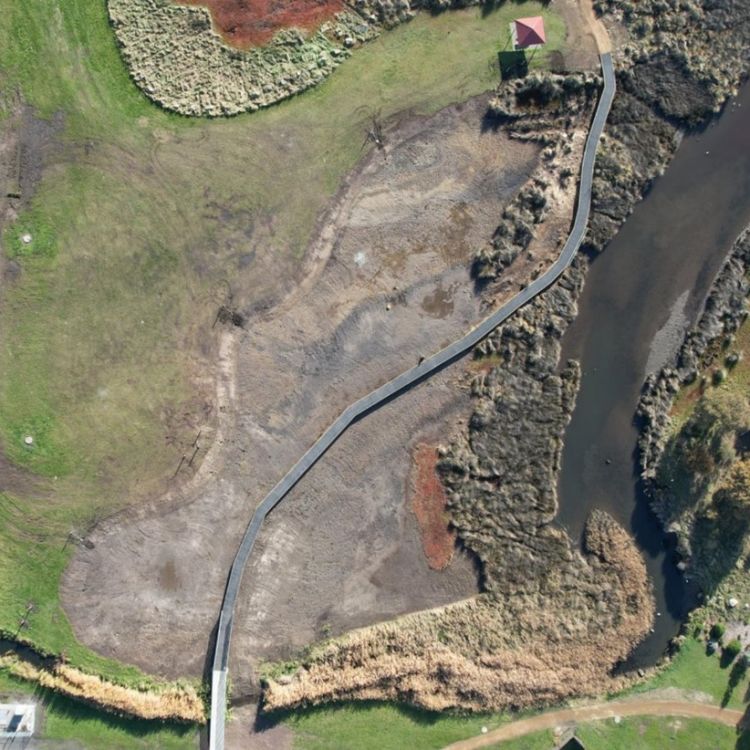
Aerial drone imagery after excavation works at Windermere Bay
Image: Mark Bachmann, Nature Glenelg Trust
Initially, it may look bare and exposed, but it won’t stay that way. Within six months of removing the soil, we will start to see re-growth of saltmarsh plants, which will return to a healthy cover within a few years.
On completion of the excavation works, we conducted buffer planting of over 700 native plant species next to the saltmarsh restoration area. This will act as a natural buffer upland of the saltmarsh and increase habitat for terrestrial native species in the bay.
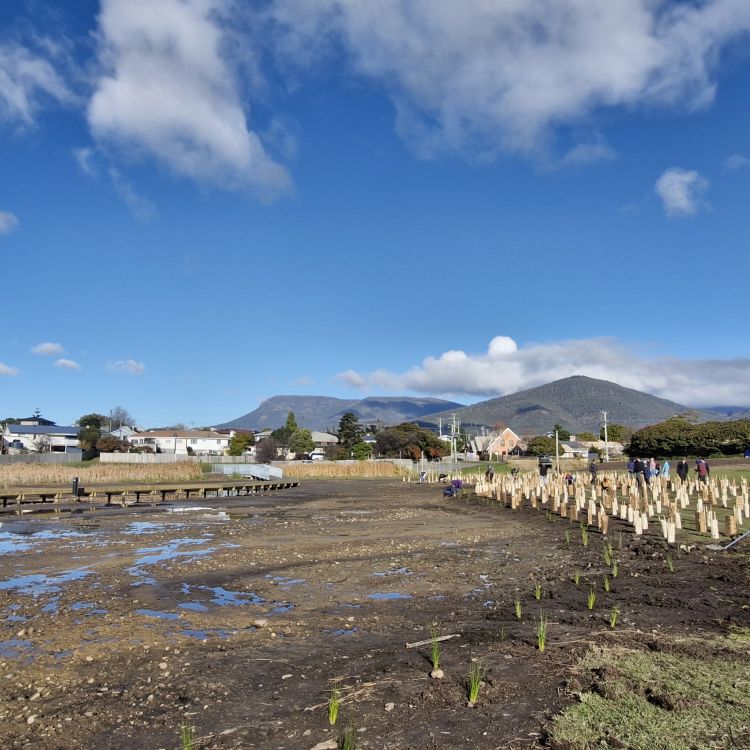
Buffer planting adjacent to the saltmarsh restoration area
Image: Derwent Estuary Program
Passive restoration
Passive restoration means letting the saltmarsh restore itself now that the area has been scraped and fenced. This means we won’t be planting saltmarsh species. They will naturally return either through seed banks still in the soil or transported from neighbouring saltmarsh plants.
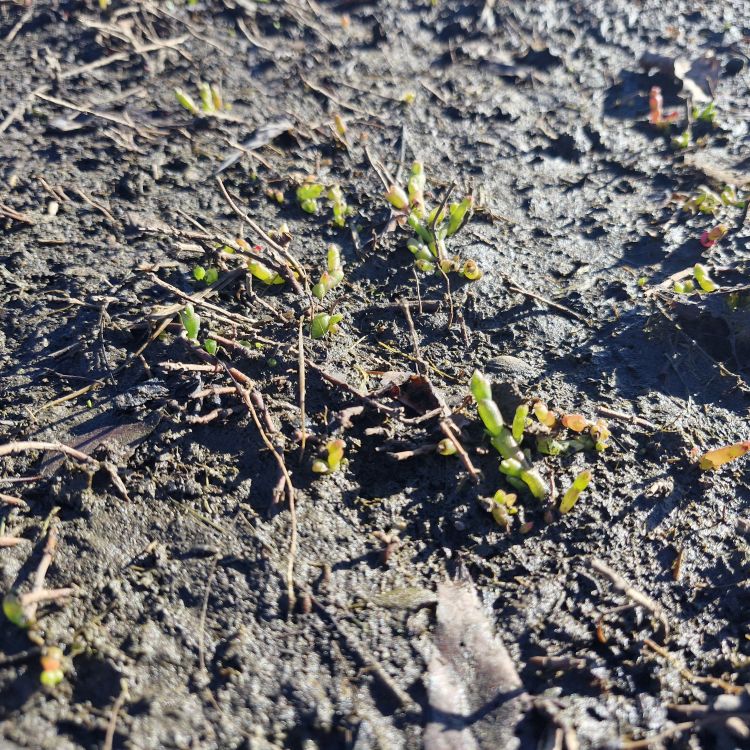
Saltmarsh samphire resprouting in the restoration area after stage 1 scraping
Image: Derwent Estuary Program
Previous projects tell us this natural restoration could take between four to 15 years for a full recovery. During this time, we will monitor the recovery and carry out weeding to prevent invasive plants from taking over. Other living species, such as birds, fish, crustaceans, birds, and macro-invertebrates, will recover in different timeframes.
Birds return quickly to restored saltmarsh areas, using these areas almost as soon as the water flows resume. Fish and crustaceans are known to return to similar levels within a year of restoring saltmarsh landscapes.
Macroinvertebrates can take longer to recover. Macroinvertebrates are small animals without a backbone. They include animals such as mayflies, snails, worms and mussels and live in rivers, estuaries and wetlands for part or all of their life. There are thousands of aquatic macroinvertebrate species, and they are a key food source for platypus, fish, and frogs.
Head on down to Windermere Bay to enjoy a nice walk along the new boardwalk and see the restoration works for yourself! By revisiting this site over the years to come you will see the recovery of this saltmarsh, and growth of the native buffer vegetation.
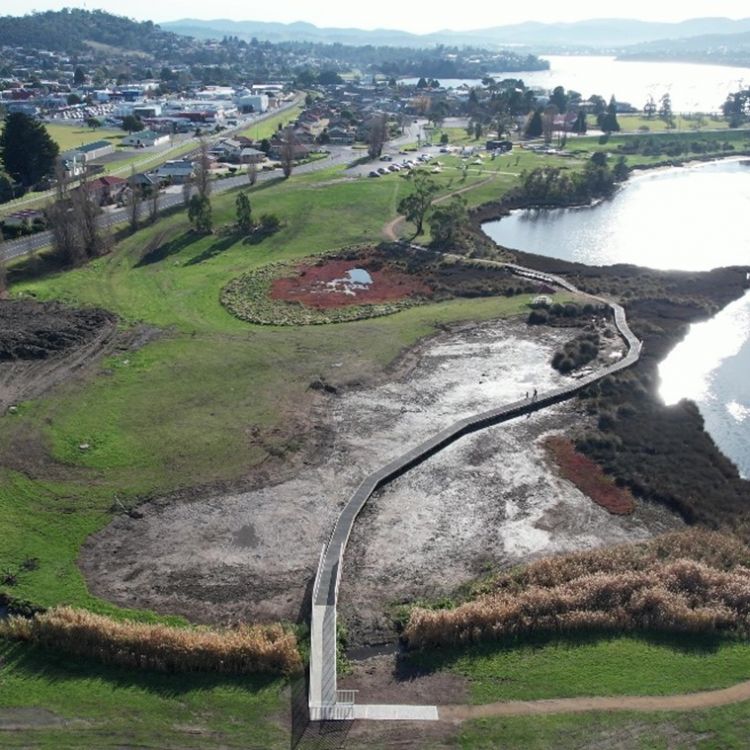
Aerial drone imagery over the saltmarsh restoration site
Image: Mark Bachmann, Nature Glenelg Trust
This project is funded by the Australian Government’s Urban Rivers and Catchments Program.
More information on saltmarshes
- You can find out more about saltmarsh habitats.
- See saltmarsh habitat educational resources.
- See publications on Derwent Estuary wetlands.
